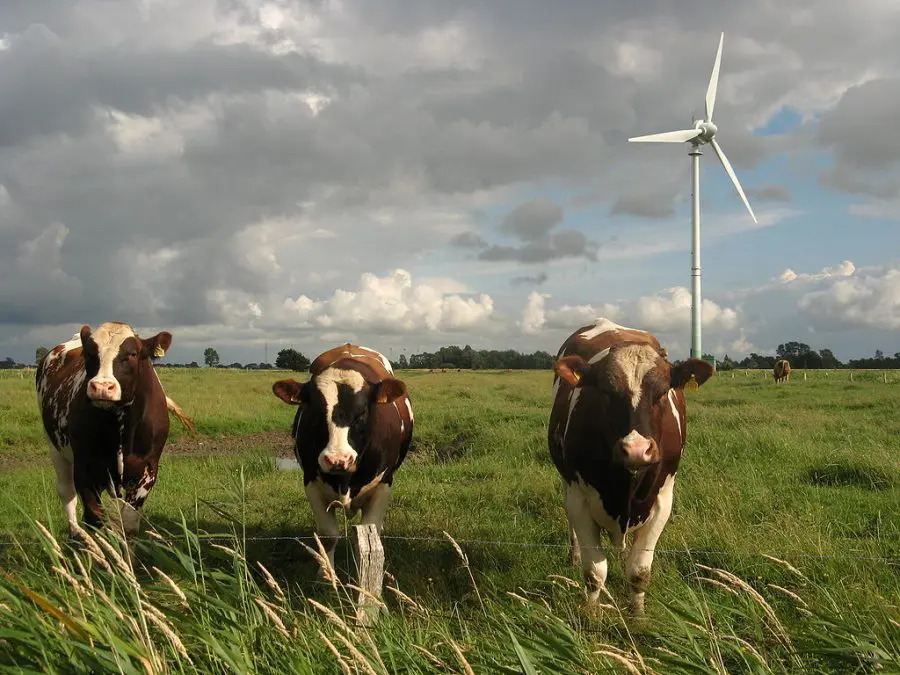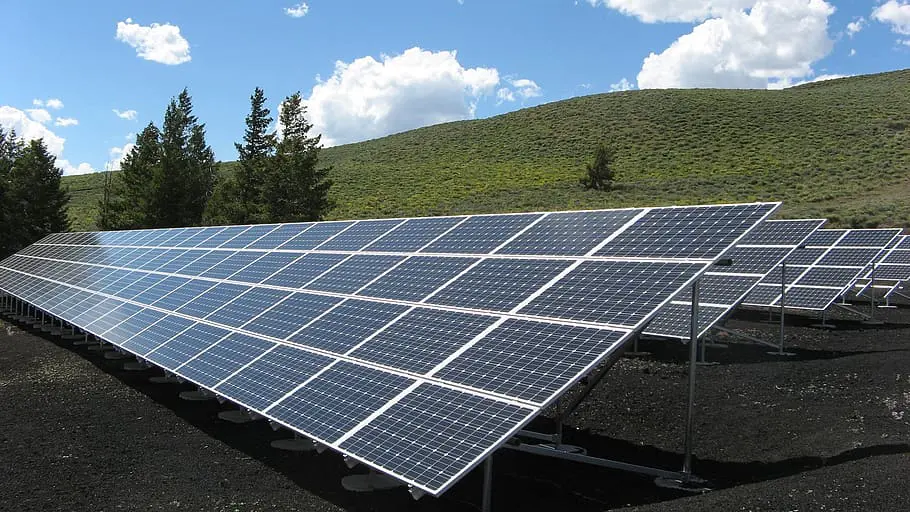
Looking to separate fact from fiction? Our blog post on “wind power myths debunked” gives you the lowdown on common misconceptions and sets the record straight!
Wind power myths debunked: Contrary to popular belief, wind turbines are not major killers of birds, nor do they significantly impact human health or agriculture. In fact, they are a cost-effective and sustainable energy source. Numerous studies support the safety and efficiency of wind power, making it a viable alternative to fossil fuels.
Curious about wind energy but bogged down by all the chatter? You’re in the right place!
Our blog post on “wind power myths debunked” is your go-to guide for clearing the air.
We’re diving deep to separate the facts from the fiction, so you can make informed decisions about this renewable energy source. Let’s get started!
Wind Power Myths Debunked: Separating Fact from Fiction

Wind power is gaining traction as one of the most promising renewable energy sources.
This blog post aims to debunk some of the most common renewable energy myths surrounding wind energy, providing you with accurate information to make informed decisions about this renewable energy source. From solar energy to wind speed, we’ll cover it all!
This blog post aims to debunk some of the most common myths surrounding wind energy, providing you with accurate information to make informed decisions.
The Rise of Wind Power
Wind power and solar panels are becoming increasingly popular as renewable energy sources.
Common Misconceptions
Despite its growth, wind energy is often misunderstood, much like solar power and other renewable technologies.
The objective of the article
This blog aims to debunk some of the most prevalent myths surrounding wind energy.
Wind power is the use of wind energy to generate useful work. Historically, wind power was used by sails, windmills and windpumps, but today it is mostly used to generate electricity. Today, wind power is generated almost completely with wind turbines, generally grouped into wind farms and connected to the electrical grid.
In 2022, wind supplied over 2000 TWh of electricity, which was over 7% of world electricity and about 2% of world energy. With about 100 GW added during 2021, mostly in China and the United States, global installed wind power capacity exceeded 800 GW. https://en.wikipedia.org/wiki/Wind_power
Myth #1: Wind Turbines Are a Danger to Wildlife
One of the most persistent myths about wind power is its supposed detrimental effect on wildlife, particularly birds. Let’s delve into the facts and dispel this misconception.
The Bird Death Narrative
A common myth is that wind turbines cause a large number of bird deaths.
What Studies Say
Numerous studies indicate that other human activities, like tall buildings and domestic cats, are more harmful to birds.
Mitigating the Impact
Recent studies suggest that simple solutions like painting turbines can significantly reduce bird fatalities.
Myth #2: Wind Energy Has a Negative Effect on Agriculture

Many people believe that wind turbines take up valuable agricultural land and disrupt farming activities.
Let’s examine how wind energy and agriculture can actually coexist.
Farmers’ Concerns
Many farmers in the United States worry that wind turbines will interfere with their agricultural activities.
Reality Check
Modern wind turbines are designed to minimize their footprint, allowing farming to continue as usual.
Additional Benefits
Wind turbines can provide farmers with an additional source of income through land leases.
Myth #3: Wind Energy is More Expensive
Cost is often cited as a significant barrier to adopting wind energy. However, when you look at the numbers, wind power is more affordable than you might think.
Initial Costs vs Long-term Benefits
While the initial setup cost can be high, wind energy often proves to be cost-effective in the long run.
Government Subsidies
Various subsidies and tax incentives make wind energy more affordable.
Comparison with Fossil Fuels
When considering long-term energy efficiency, wind energy is often cheaper than natural gas and coal-fired power plants.
Myth #4: Wind Turbine Materials Create Pollution

Some people are under the impression that the materials used in wind turbines contribute to pollution. Let’s clear the air on this issue.
Emission Myths
Some people believe that the materials used in wind turbines contribute to pollution.
The Real Impact
According to the Energy Information Administration, wind turbines have a much lower impact on global warming and greenhouse gas emissions compared to conventional fossil fuels.
Lifecycle Analysis
When considering the entire lifecycle of a wind turbine, its environmental impact is minimal.
Myth #5: Wind Turbines Are Bad for Your Health
The term “wind turbine syndrome” has been coined to describe a range of health issues supposedly caused by living near a wind farm. Let’s look at what the science actually says.
The “Wind Turbine Syndrome”
A term coined to describe a range of health issues supposedly caused by living near a wind farm.
Scientific Counterarguments
An independent panel of experts and the National Research Council have found minimal impacts on human health.
Noise Levels
While turbines do produce some noise, it’s generally within acceptable levels.
Myth #6: Wind Turbines Are Too Noisy
Intro: Noise is a common complaint among those living near wind farms. However, the actual noise levels are often much lower than many people think.
Common Complaints
Some residents complain about the noise produced by wind turbines.
Actual Noise Levels
A recent analysis by the Massachusetts Department of Environmental Protection found that the noise level is generally acceptable.
Contextualizing the Noise
When compared to other common noises in residential areas, wind turbines are not exceptionally loud.
Additional Insights
Renewable Energy Skeptics vs. The Facts
There’s always a group of renewable energy skeptics who question the viability of wind energy, often comparing it to nuclear energy.
Experts like Amory B. Lovins and M. V. Ramana have provided more substantive arguments that debunk many of these criticisms.
Green Energy and Fuel Costs
One of the biggest advantages of wind energy is its role in green energy initiatives.
Not only does it help in reducing fuel costs, but it also offers a sustainable alternative to conventional power plants and fossil fuel industry practices.
The Impact of Wind Turbines
Concerns about the impact of wind turbines, especially on-shore wind turbines, often circulate.
However, conservative estimates and studies by organizations like the National Audubon Society show that the impact is minimal, especially when compared to the health costs associated with fossil power plants.
Energy Security and the Global Perspective
In regions like Northern Germany and New England, wind energy is not just an environmental choice but also a matter of energy security.
With the integration of new methods of energy management, wind energy is becoming a reliable part of the energy industry’s future.
FAQs
Hey there, we get it—when it comes to wind power, you’ve got questions! And we’re here to provide some straightforward answers.
Whether you’re curious about the safety of wind turbines or wondering why wind energy sparks so much debate, we’ve got you covered.
So, let’s dive into some of the most frequently asked questions!
Q: Are wind turbines safe?
A: Absolutely, numerous studies and reliable sources confirm the safety of wind turbines. They’re designed with multiple safety features and undergo rigorous testing.
Q: How do wind turbines affect property value?
A: Most analyses show minimal to no impact on property values. In some cases, having a wind farm nearby can even be a selling point!
Q: What is the lifespan of a wind turbine?
A: The average wind farm has a lifespan of about 20-25 years, according to the National Renewable Energy Laboratory.
Q: Are there any controversies surrounding wind energy?
A: Yes, like any energy source, wind power has its critics. Concerns often revolve around environmental impact and cost, but many of these issues are based on myths or outdated information.
Q: Why is wind energy so controversial?
A: The controversy often stems from misunderstandings or myths, such as the impact on wildlife or noise levels. However, most of these concerns have been addressed through research and technological advancements.
Q: What is the criticism of wind power?
A: Critics often point to the initial cost, intermittent energy production, and potential impact on local ecosystems. However, ongoing research and development are continually mitigating these concerns.
Q: Is wind power legit?
A: Absolutely, wind power is a legitimate and growing source of clean, renewable energy. It’s backed by science and increasingly adopted worldwide as a way to reduce greenhouse gas emissions.
Conclusion

Alright, we’ve tackled some big myths and answered some burning questions about wind power.
As we wrap things up, let’s take a moment to reflect on what we’ve learned. Spoiler alert: Wind energy has a lot more going for it than you might have thought!
So, stick around for our final thoughts as we summarize and look ahead to the future of this renewable energy source.
Summary of Debunked Myths
So, what have we learned today? First off, wind turbines aren’t the bird-killing, noisy, and expensive contraptions some people make them out to be.
We’ve gone through the data, and it’s clear: most of the common myths about wind power don’t hold up under scrutiny.
Whether it’s concerns about wildlife or misunderstandings about the cost, we’ve seen that a lot of the criticisms are based on outdated or incorrect information.
So the next time someone brings up one of these myths, you’ll have the facts to set the record straight!
The Future of Wind Energy
Now, let’s talk about what’s on the horizon for wind energy.
With advancements in new technology, like more efficient onshore wind turbines and smarter grid operators, wind power is becoming an increasingly viable alternative to fossil fuels and even nuclear power.
And let’s not forget about offshore wind turbines, which offer even more potential for clean electricity generation.
Plus, renewable energy technologies have come a long way in the past decade, making renewable energies like wind and solar projects more efficient and cost-effective.
Plus, as more people become aware of the need to combat global climate change, the demand for renewable energy sources like wind power is only going to grow.
So, it’s safe to say that the future looks pretty bright for wind energy!
Final Thoughts
As we wrap up, I hope this blog post has given you a new perspective on wind power and the broader energy industry.
We’ve busted some myths, looked at the facts, and even peeked into the future of this renewable energy source.
A recent study even suggests that the load factor of wind farms is improving, making them more efficient in electricity generation.
The bottom line? Wind power has a lot to offer, from reducing greenhouse gases to providing a sustainable way to meet our energy supply needs.
So the next time you see a wind turbine, you’ll know it’s more than just a pretty face. It’s a key player in our journey toward a cleaner, more sustainable future.
And there you have it! Thanks for sticking with us through this whirlwind tour of wind power.
Feel free to share this post with anyone who could use a little enlightenment on the subject!






